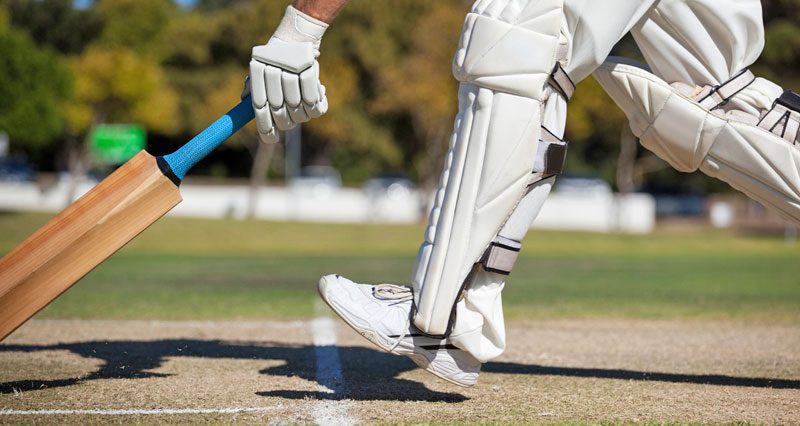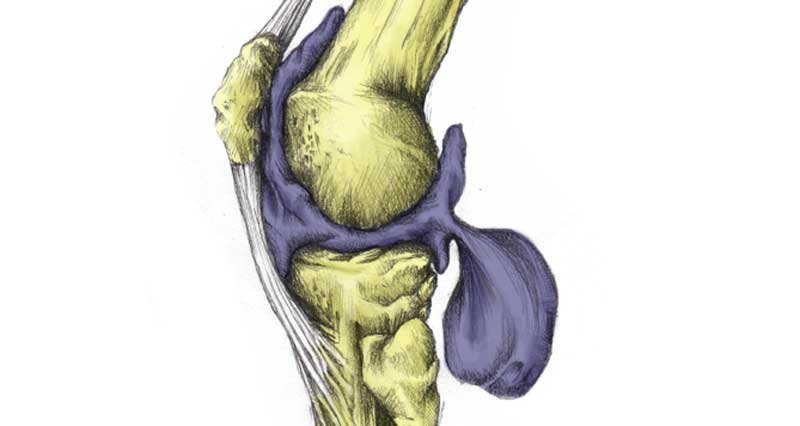Cricket injuries are either acute injuries that occur suddenly such as a torn muscle, or an impact from the ball. Or they can be chronic injuries that occur gradually through overuse.
Acute Cricket injuries (sudden onset)
Contusions (dead leg)
Direct impact to a muscle causes a contusion, for example being struct by a hard cricket ball. The ball crushes the muscle against bone resuting in muscle damage and bleeding. It is important to treat a contusion properly to avoid long term complications such as Myositis ossificans.
Read more on Contusions.
Rotator cuff strain
A rotator cuff strain is a tear to any of the four rotator cuff muscles in the shoulder. These muscles are important for stabilizing the shoulder joint. Symptoms of a torn rotator cuff will usually consist of sudden pain in the shoulder sometimes accompanied by a tearing feeling. This can be severe and may transmit down into the arm.
Read more on rotator cuff strain.
Ankle Sprains
A sprained ankle is one of the most common injuries in sport. In the majority of cases, the ankle rolls inwards (inversion) under the weight of the rest of the body, resulting in damage to the ligaments on the outside of the ankle.
Read more on sprained ankles.
Medial meniscus injury
Medial knee cartilage meniscus injury or torn meniscus is a tear to the semi-circular cartilage in the knee joint causing pain on the inside of the knee. Direct trauma to the knee is a cause, as well as twisting your knee. In older cricketers cartilage tears occur from gradual wear and tear or degeneration.
Read more on medial meniscus injury.
Chronic Cricket injuries (gradual onset)
The following cricket injuries develop gradually, often from overuse:
Impingement syndrome
Rotator cuff tendons in the shoulder become impinged, or catch in the shoulder joint. Symptoms include shoulder pain which comes on gradually over a period of time.
Read more on Impingement syndrome.
Golfer’s elbow
Throwers elbow (Golfer’s elbow) or medial epicondylitis is an injury similar to tennis elbow but causing pain on the inside of the elbow instead. Symptoms often come on gradually through overuse although acute injuries can occur to pitchers who throw too hard too soon or with bad technique.
Read more on Golfer’s elbow.
Lower back pain
Back pain can be particularly difficult to diagnose due to the complexity and the number of structures and tissues in the lower back that can cause pain. The most common cause is a slipped or prolapsed disc, especially in fast bowlers.
Read more on lower back pain
Should I seek professional treatment for my Cricket injury?
If you have any of the following symptoms you should seek further medical assistance from either your local GP or a private clinician such as a podiatrist, physiotherapist, sports therapist, osteopath, or chiropractor:
- Severe pain, especially on walking
- Severe swelling (oedema)
- Altered sensation in the foot – such as a feeling of “pins and needles” (paresthesia) or a “loss of feeling” (anaesthesia).
- Unable to complete normal daily activities after the initial 72 hours.
If you have followed the P.R.I.C.E. principles (see below) and are still unable to walk after 72 hours or still have severe pain that is not subsiding after the first 72 hours you should visit your local A&E department for further assessment.
Also seek medical advice if you:
- Apply the P.R.I.C.E. principles for more than two weeks, and still have a weakness or pain
- Have ongoing discomfort in your foot or heel
Immediate first aid for acute Cricket injuries
The PRICE principles are the gold standard set for treating acute sports injuries. The acronym stands for Protection, Rest, Ice, Compression, and Elevation and should be applied as early as possible and continued for at least the first 24-72 hours.
Read more on PRICE principles








